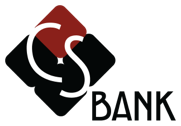not featured
2025-05-29
5/29/2025
published
%20(21).jpg)
Checking Vs. Savings: Do you Need to Both?
Checking and savings accounts are both kinds of deposit accounts—accounts where you deposit (and withdraw) money. They’re designed to hold your funds securely, while also providing you with access when you need them. But each account has a different purpose, and smart money management often requires that you have both.
So, what exactly is the difference between each kind of account, and how do you find the right savings and checking account for your needs? In this post we’ll explore the checking and savings account basics, different options that might be available to you, and how to make the most of all our accounts have to offer. Keep reading to learn more!
What is a Checking Account?
A checking account is a kind of deposit bank account that is designed to be used every day. Just like an airport hub serves as a base for an airline and facilitates connections between destinations, a checking account is your financial hub. Income is received, funds are pooled, and then are available to be used to make payments or transfer to other accounts.
Like other deposit accounts (including savings accounts, money market accounts, and certificates of deposit), they are federally insured by the FDIC.
Like other deposit accounts (including savings accounts, money market accounts, and certificates of deposit), they are federally insured by the FDIC.
How Checking Accounts Work
Checking accounts are called checking accounts because you can use them to write checks—but these days other forms of transactions are just as common. Also called “Demand Deposit Accounts” because your funds are available on demand, in addition to writing checks, there are many ways to access your money with a checking account:
- Using a debit card at an ATM with withdraw cash
- Filling out a withdrawal slip at the bank counter or drive-thru
- Using a debit card for online or in-person purchases
- Asking for “cash back” when using your debit card to make purchases in person
- Using Bill Pay in a mobile banking app or online banking portal to send checks for free through the mail
- Using Zelle or other person-to-person (P2P) payment apps to send money digitally
You can add funds to your checking account in a number of ways:
- Counter and drive-thru deposits of checks, cash, or cashier’s checks at the bank
- ATM deposits with your debit card
- Direct deposit from your employee or other income source
- Transfers from payment apps to your checking account
- Transfers from other accounts (completed at the bank or through online or mobile banking)
Each type of checking account will have different rules and requirements, including a possible required minimum balance. When you sign up for an account, take the time to talk to your bank to understand the ins and outs of the account to make the most of perks and avoid fees.
Types of Checking Accounts
Checking accounts have evolved over the years to fit a wide variety of lifestyle needs, budgets, and preferences. Let’s take a look at some of the most popular offerings you’ll find at your bank to understand their differences.
Basic Checking Accounts
Every bank will have a different name for their basic checking account. At CS Bank, we call ours Simple Checking. These accounts usually have low opening deposit requirements (ours is $100), and offer simple benefits like online and mobile banking and a free debit card. Designed to meet basic needs, they are ideal for customers new to checking accounts, as well as individuals who like to keep their finances straightforward.
Cash Bank or Rewards Checking Accounts
Increasingly, more and more banks are offering checking accounts that come with rewards for using them. These can come in the form of cash back on purchases or rewards points. Often, these accounts have a few more restrictions or requirements, like a higher balance or a specific number of transactions each month to earn the reward. For example, our Kasasa Cash Back Checking Account requires 15 debit transactions and 2 ACH transactions (like direct deposit paychecks) each month to earn cash back. For individuals who use their account regularly, these accounts can offer great perks.
Interest Checking Accounts
For customers who use their accounts heavily or keep a higher balance, checking accounts that earn interest can be valuable tools to grow your money. Our Kasasa Cash Plus Checking Account offers high interest when you make a certain number of debit transactions each month (25) and ACH transactions (2).
Senior Checking Accounts
Finally, many banks, like CS Bank, offer checking accounts that cater to the unique needs of our senior customers. With our Senior Select Checking, enjoy all the usual perks like a $100 opening deposit and free debit card, plus free checks, 2 free cashier’s checks each month, and free paper statements.
What is a Savings Account?
A savings account is another type of deposit account, but unlike a checking account, it isn’t designed for spending and facilitating payments. Its purpose is to help you accumulate money. Having a place that’s separate from the account that you use for spending means you are less likely to spend it, and you can easily consider it a separate part of your budget. Additionally, to boost your funds, savings accounts offer interest on your balance.
How Savings Accounts Work
While savings accounts don’t usually have debit cards or checks, your money isn’t inaccessible. You can make withdrawals by:
- Filling out a withdrawal slip at the bank counter or drive-thru.
- Using your debit card at an ATM to withdraw cash or transfer to your checking account.
- Transferring funds to your checking using online or mobile banking.
Note that your savings accounts may have a limit on the number of transactions each month, so be sure to read the details on yours if you plan on making transfers from your account on a regular basis.
Savings accounts have competitive interest, but aren’t designed for long-term investing—there are other products meant for that, like IRAs (individual retirement accounts). However, savings accounts are a great vehicle for an emergency or rainy day fund, covering unexpected costs and helping you be more prepared for whatever life throws your way. And because they are easy to open, manage, and access, they are also useful for short-term goals like saving for a planned purchase or an upcoming expense.
Types of Savings Accounts
Like checking accounts, there are different types of savings accounts to meet a range of uses and needs.
Statement Savings Accounts
Also called a basic, traditional, or regular savings account, these accounts are akin to a simple checking account. They have few restrictions and low balance requirements ($100 at CS Bank to avoid fees). While other savings accounts may have more perks or higher interest rates, these accounts are valuable for their simplicity and ease of use. At CS Bank, our Statement Savings Account requires only a $100 opening deposit and offers free paper statements, as well as no service charge for minors no matter what their balance is—a great way to start your savings journey!
High-Interest Savings Accounts
Many banks also offer high-interest options, designed for more advanced savers who can maintain larger balances. Our high-yield Kasasa Saver offers tiered interest—the more you save, the more interest you’ll earn. This savings account also links seamlessly to your Kasasa Checking Account to make transferring money easy and saving effortless.
More Accounts to Help You Save
In addition to traditional savings accounts, more options to help you grow your savings or save for a specific expense include:
- Money Market Savings Accounts: A type of high interest bank account that typically offers elevated interest rates in exchange for higher minimum balance requirements. These can be a great tool when saving for big expenses, like your first home.
- Certificates of Deposit (CDs): A deposit account that comes with a fixed term length and interest rate. Interest is often based on the amount you deposit and term length you choose.
- Health Savings Accounts: Tax-advantaged savings accounts to pay for qualifying medical expenses. HSAs are only available to individuals with high-deductible health plans.
- Christmas Club Accounts: Savings accounts where individuals can deposit money regularly throughout the year to use for holiday spending or a planned yearly expense, like a vacation. To learn more about how these accounts work, check out our post, Benefits of a Christmas Club Account.
Why Have Both a Checking and a Savings Account?
Checking accounts and savings accounts serve different functions, so they’ve been designed to work differently. Checking accounts are a practical necessity today, allowing you to make daily transactions and pay your bills and helping you manage your day-to-day expenses. While it might be possible to get by without a savings account, when you do so you are missing out on an important financial tool.
Here are a few reasons why you should also maintain a separate savings account:
- Prepare for Emergencies: Savings accounts provide a financial cushion for unexpected expenses.
- Earn Interest: Savings accounts typically offer higher interest rates than checking accounts.
- Financial Goal Planning: Having a separate account can make it easier to save for specific goals like vacations or large purchases—and see your progress.
- Budgeting: By separating spending money from your savings you can have greater oversight over your finances.
- Limited Access: Reduced access to your funds also reduces the temptation to spend those savings.
Checking and savings accounts are designed to go hand in hand, with easy transfers between accounts. Many times, you can even set up monthly automatic transfers from your checking and savings account to make sure you never miss a contribution. This is one of the great perks of CS Bank’s Digital Banking.
How much should I keep in my checking and savings accounts?
Checking accounts need to have enough funds to cover your usual monthly expenses—plus a little bit of wiggle room in case you spend a little more than you expect one month. Some individuals choose to keep a set balance in their account at all times and transfer any extra funds to their savings account.
Your savings account goal balance will depend on your goal. For instance, if you are saving for a big purchase, your balance will grow slowly till you reach the amount needed. But if your account is an emergency savings fund, consider setting aside 3-6 months of expenses to cover surprise costs or lost income. Once you reach your goal, don’t stop saving! Create a new goal, increase your retirement contributions, or explore ways to invest.
Open a Checking or Savings Account with CS Bank
Whether you’re new to banking or savings, looking to find a more supportive banking partner, or simply ready to mature to the next level account, at CS Bank we have you covered.
Our checking and savings accounts, like our Kasasa Cash Plus Checking and Kasasa Saver, come with a host of benefits—from a portfolio of online and mobile banking features to make your life easier to great perks like interest and cash back.
Apply for a Checking or Savings account online, visit your nearest location in Northwest Arkansas or Southwest Missouri, or contact us with your questions. Our experienced and dedicated bankers are eager to help you find the right bank account for your needs!


